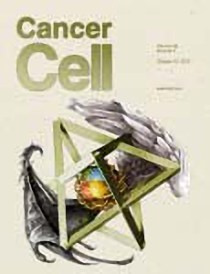All AbMole products are for research use only, cannot be used for human consumption.

Lapatinib (GW572016) is a potent purified EGFR and ErbB-2 inhibitor with IC50 of 10.2 and 9.8 nM, respectively. Lapatinib is >300-fold selective for EGFR and ErbB-2 over other kinases tested such as c-Src, MEK and ERK, except for ErbB-4. Lapatinib prevents receptor autophosphorylation of EGFR and ErbB-2 in a dose-responsive manner with IC50 of 0.17 and 0.08 μM against BT474 and HN5 cell lines, respectively. The ability of Lapatinib to blocks EGFR and ErbB-2 autophosphorylation in EGFR- and ErbB-2-overexpressing tumor cells is ∼10-fold less than its potency on the purified enzyme. The ErbB-2-transfected mammary epithelial cell line, HB4a c5.2, is ∼40-fold more responsive to Lapatinib treatment than the untransfected parental control line, HB4a. Transient exposure to 30 μM Lapatinib results in complete inhibition of outgrowth of the HN5 cell population after ∼2 additional weeks of culture without Lapatinib. Lapatinib inhibits tumor growth by 50% occurs at concentrations of >3.3 μM. Significant prevention of outgrowth (20%) occurs at doses as low as 0.37 μM. Lapatinib is similar to OSI-774 in its ability to inhibit outgrowth of the EGFR-overexpressing cell line. Lapatinib is potent at inhibiting the growth of BT474 and HN5 human tumor xenografts. A dose-responsive inhibition of both models occurs on treatment of tumor-bearing mice with 30 and 100 mg/kg Lapatinib orally, twice daily. Lapatinib at the dose of the 100 mg/kg completely inhibits the growth of tumor. At this dose, there is <10% weight loss in treated animals over the course of the 21-day treatment. Lapatinib has been approved for HER-2-positive metastatic breast cancer.

Cancer Cell. 2015 Jan 12;27(1):97-108.
Measurement of PIP3 Levels Reveals an Unexpected Role for p110b in Early Adaptive Responses to p110a-Specific Inhibitors in Luminal Breast Cancer.
Lapatinib purchased from AbMole
| Cell Experiment | |
|---|---|
| Cell lines | HFF, MCF-7, T47D, A-431, HN5, BT474, N87, CaLu-3, HB4a, and HB4a c5.2 cells |
| Preparation method | Exposing cells to various concentrations of Lapatinib for 72 hours. Using methylene blue stainingto estimate relative cell number . The absorbance at 620 nm is read in a Spectra microplate reader. Cell death and cell cycle analysis are assessed by propidium iodide staining and antibody detection of incorporated BrdUrd and staining with propidium iodide. |
| Concentrations | Dissolved in DMSO, final concentrations ~100 μM |
| Incubation time | 72 hours |
| Animal Experiment | |
|---|---|
| Animal models | CD-1 nude female mice implanted s.c. with HN5 cells, and C.B-17 SCID female mice implanted s.c. with BT474 cells |
| Formulation | Formulated in a vehicle of sulfo-butyl-ether-β-cyclodextrin 10% aqueous solution (CD10) |
| Dosages | ~100 mg/kg |
| Administration | Orally twice daily |
| Molecular Weight | 581.06 |
| Formula | C29H26ClFN4O4S |
| CAS Number | 231277-92-2 |
| Solubility (25°C) | DMSO 60 mg/mL |
| Storage |
Powder -20°C 3 years ; 4°C 2 years In solvent -80°C 6 months ; -20°C 1 month |
[3] Minna Voigtlaender, et al. Lapatinib
[4] Minna Nolting, et al. Lapatinib
[5] Cynthia Frankel, et al. Lapatinib side-effect management
| Related EGFR/HER2 Products |
|---|
| Sevabertinib
Sevabertinib is an epidermal growth factor receptor (EGFR) tyrosine kinase inhibitor with antitumor activity. |
| BPIQ-I
BPIQ-I (PD 159121) is a potent and ATP-competitive EGFR tyrosine kinase inhibitor.. |
| HKI-357
HKI-357 is an irreversible dual inhibitor of EGFR and ERBB2 with IC50s of 34 nM and 33 nM, respectively. |
| SJF-1528
SJF-1528 is a potent EGFR PROTAC degrader with DC50 values of 39.2 nM and 736.2 nM for wild-type EGFR in OVCAR8 cells and Exon 20 Ins mutated EGFR in HeLa cells. |
| CH7233163
CH7233163 is a noncovalent ATP-competitive inhibitor for EGFR-Del19/T790M/C797S. |
All AbMole products are for research use only, cannot be used for human consumption or veterinary use. We do not provide products or services to individuals. Please comply with the intended use and do not use AbMole products for any other purpose.


Products are for research use only. Not for human use. We do not sell to patients.
© Copyright 2010-2024 AbMole BioScience. All Rights Reserved.
